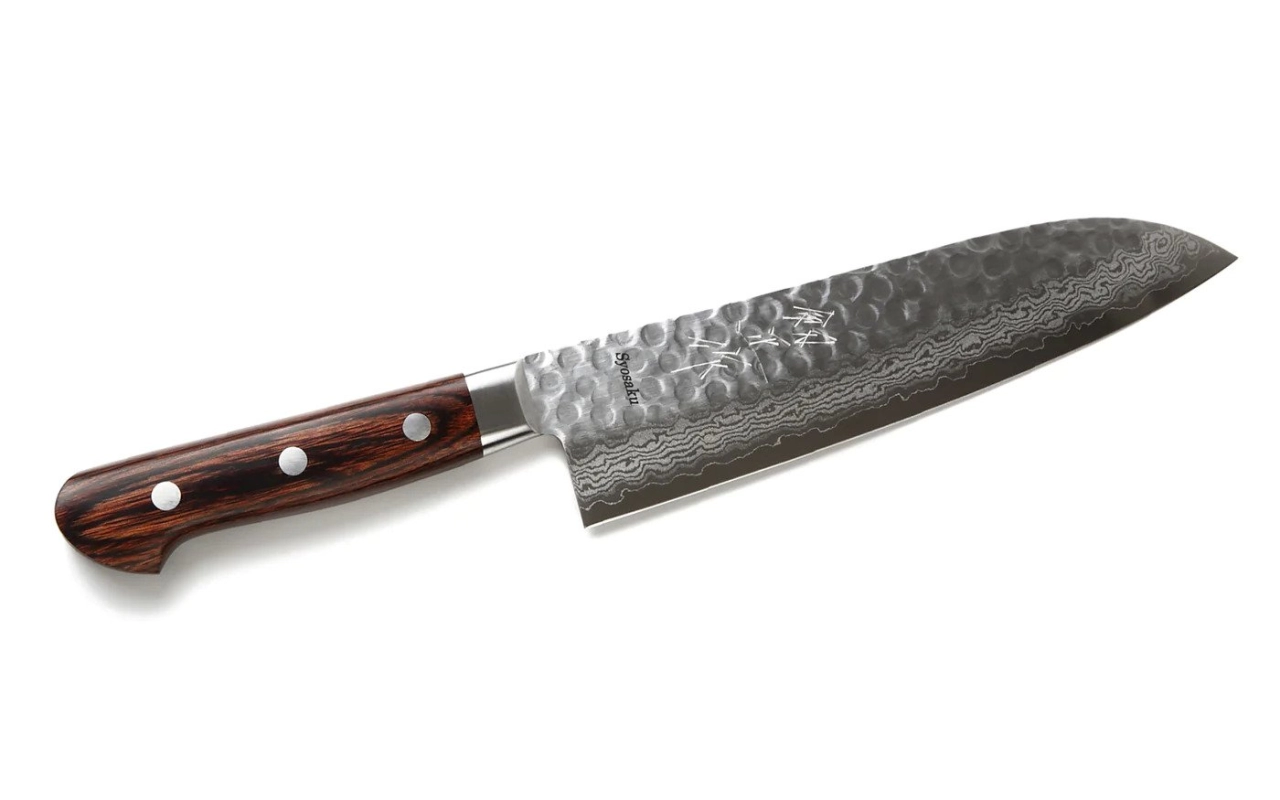In the world of kitchen cutlery, the Santoku knife stands out as a versatile and indispensable tool. Whether you're a professional chef or a home cook, understanding the ins and outs of this Japanese knife can significantly enhance your culinary experience. In this comprehensive guide, we'll delve into what makes the Santoku knife unique, its benefits, how to choose the right one, and essential tips on usage and maintenance. Let's get started! The Santoku knife, originating from Japan, is a multi-purpose kitchen knife that has gained immense popularity worldwide. "Santoku" translates to "three virtues" or "three uses," highlighting its proficiency in three essential cutting techniques: slicing, dicing, and chopping. It typically features a shorter, wider blade than a traditional Western chef's knife and is known for its exceptional precision. Versatility: The Santoku knife's design makes it ideal for a wide range of tasks, from slicing paper-thin vegetables to dicing meat and fish with ease. Efficiency: Its sharp blade and ergonomic design reduce fatigue during extended cutting sessions, increasing productivity in the kitchen. Precision: The Santoku's thin blade allows for precise cuts, making it a favorite among chefs who require accuracy in their culinary creations. Santoku knives are suitable for cooks of all skill levels. They are particularly favored by home cooks who appreciate the knife's ease of use and by professional chefs who demand precision in their cooking. Japanese Santoku knives often have thinner blades with a harder steel composition, providing razor-sharp edges and excellent edge retention. Western Santoku knives, on the other hand, may have slightly thicker blades and a more pronounced curve, offering durability and stability. Santoku knives come in various blade materials, including stainless steel, high-carbon steel, and Damascus steel. Each material has its unique benefits, such as corrosion resistance or a striking appearance. Handles can be made from wood, plastic, or metal. The choice of handle material affects the knife's overall balance and comfort during use. Wooden handles offer a traditional aesthetic, while plastic and metal handles are known for their durability. Blade Length: Select a blade length that suits your cutting needs and hand size. Most Santoku knives range from 5 to 7 inches. Blade Material: Consider the type of steel and its properties, such as hardness and corrosion resistance. Handle Comfort: Choose a handle that feels comfortable and secure in your hand. Some renowned brands for Santoku knives include Shun, Global, Wusthof, and Miyabi. Researching and comparing different models can help you find the perfect match for your kitchen. Safety is paramount in the kitchen. Proper cutting techniques, like the pinch grip, and a stable cutting surface can prevent accidents. Maintaining a sharp edge is crucial. You can sharpen a Santoku knife using whetstones, honing rods, or electric sharpeners. Store your Santoku knife in a knife block, magnetic strip, or blade guard to protect the edge and ensure safety. Learn various cuts, including julienne, dice, and chiffonade, to fully utilize your Santoku knife's capabilities. Vegetable Stir-Fry: Perfect for thinly slicing vegetables. Sushi Rolls: Ideal for precise cuts of sushi ingredients. Chicken Teriyaki: Use the Santoku knife to cut boneless chicken into uniform pieces. In summary, the Santoku knife is a culinary powerhouse, prized for its versatility, efficiency, and precision. When choosing the right Santoku knife for your kitchen, consider your preferences in blade material, handle design, and size. With proper care and maintenance, your Santoku knife will become an indispensable kitchen companion, elevating your cooking experience to new heights. Santoku Knife vs. Chef's Knife Discover the differences between these two kitchen knife giants and when to use each. Santoku Knife vs. Other Kitchen Knives Compare the Santoku knife to paring knives, utility knives, and bread knives to understand their distinct purposes. How to Maintain a Santoku Knife Explore the best practices for keeping your Santoku knife in optimal condition. Santoku Knife Accessories Learn about essential accessories like knife sharpeners, cutting boards, and knife storage solutions that complement your Santoku knife.
What is a Santoku Knife?
What are the Benefits of Using a Santoku Knife?
Who Should Use a Santoku Knife?
Different Types of Santoku Knives
Japanese vs. Western Santoku Knives
Different Blade Materials
Different Handle Materials
How to Choose the Right Santoku Knife for You
What to Consider When Choosing a Santoku Knife
Popular Santoku Knife Brands and Models
How to Use and Care for a Santoku Knife
How to Safely Use a Santoku Knife
How to Sharpen a Santoku Knife
How to Store a Santoku Knife
Common Santoku Knife Cuts
Recipes that Use a Santoku Knife
A Few Popular Recipes that Use a Santoku Knife
Conclusion
FAQ